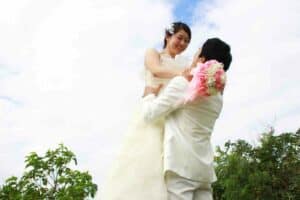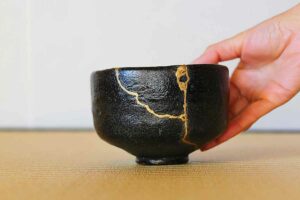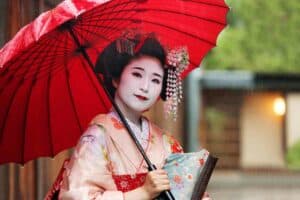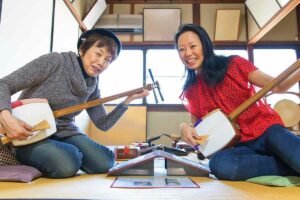The celebration of Christmas, in Japan, can be traced back centuries.
A veritably westernised experience today, albeit an almost completely secular one, the Land of the Rising Sun observes both Christmas Eve and Christmas Day, in line with the western dates; as well as being carried out in an extremely Americanised, consumerist, fashion.
Table of Contents
Celebrating Christmas in Japan
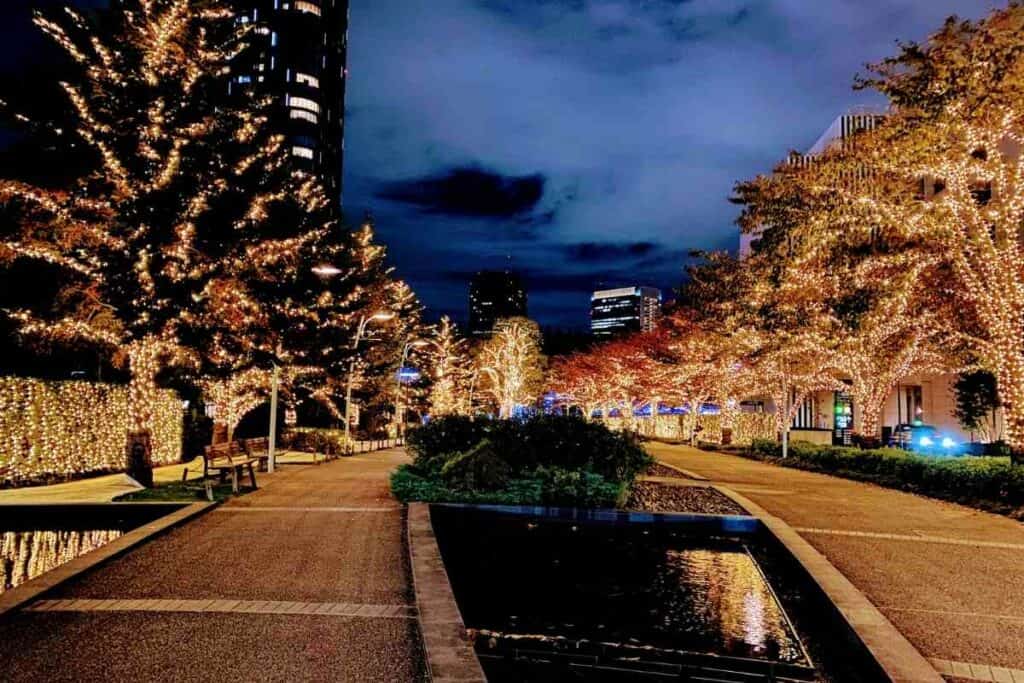
From a western perspective, as with much of Japanese culture, the season is taken to what many consider to be the quirky extremes, in places, but most family gatherings are carried out over the New Year period.
Read later – 10 Best New Year Celebrations In Japan
In Some Places – You may even think you have been transported directly into Whoville, just before the Grinch shows up.
Bright baubles adorn flashing, festive trees, and homes are decorated with the traditional Christmas décor that we all know and love.
Although Boxing Day remains largely unobserved, you will certainly feel closer to home should you choose to visit over the holiday season.
Japan’s relationship with Christmas, however, has not always been a jolly one. Despite this, today, Santa-san really does come to town.
Here, we will take a brief journey through some of Japan’s history with Christmas. Telling Japan’s Christmas Past, we will venture out from the introduction of Christianity into the country.
We will then explore the tumultuous timeline of Christmas bans and festive KFC Christmas dinners and teach you a thing or two about the on again-off again relationship that this enchanting land has with the annually anticipated time of the year.
Why Do They Celebrate Christmas in Japan?
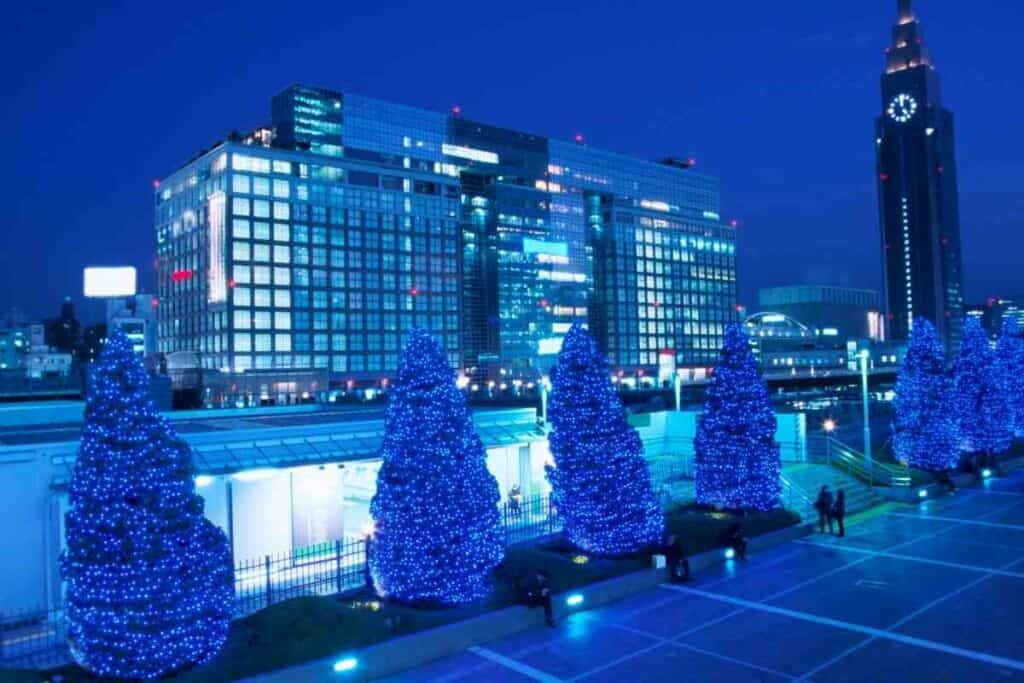
Despite the attempted introduction of Christianity into Japanese culture, which arguably failed, one percent of its vast population still worships Jesus Christ, throughout the many prefectures.
Japanese culture, however, somewhat clung on to the celebration of Christmas and it is now weaved into the very fabric of Japanese life.
Christianity was pioneered in the country by Jesuit Missionary Francis Xavier (1549), during the Sengoku era, reportedly making the first celebration of the holiday as early as December of the year 1552.
Native dominant religions, Buddhism and Shinto, collectively managed to drown it out, almost completely.
As a result, Christianity never really took hold in Japanese society, nor did it ever flourish like its opposition.
In Spite of This: Kyoto held a famous Christmas Mass in 1560 and for some time, at least, Christmas was celebrated annually.
Christmas is Cancelled!?
Words that could literally bring floods of tears to the eyes of millions of children worldwide, in 1614 Japan, Christianity was banned, inevitably very nearly died out, and Christmas celebrations faded along with it.
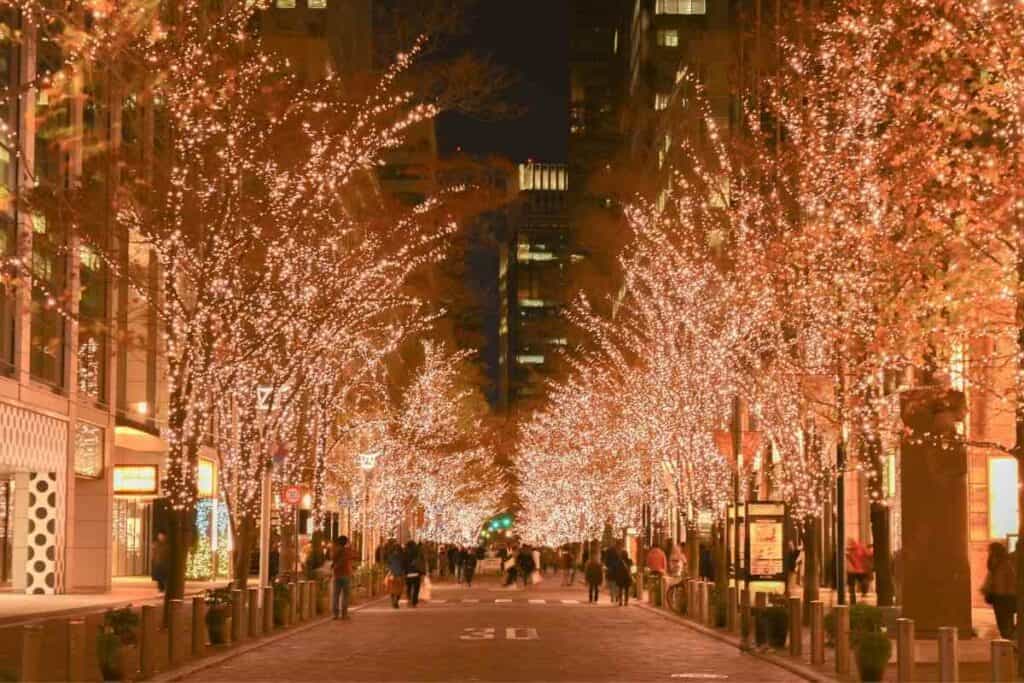
Christians suffered extreme persecution, throughout the Edo period, and no one dared to openly celebrate the holiday, aside from a few subsociety groups and communities which held festivities and rituals in secret.
Remnants of such groups can still be seen in places today. It was not only the Christian religion that was outlawed, though.
Japan subsequently closed off its borders to everyone else, in an attempt to protect themselves from all outside influences.
Christmas only made its gradual return over two centuries later, in around the 1870s, sometime after the country reopened its borders to the rest of the world once more.
The Meiji Restoration
This historic event was one that was fundamental in the implementation of religious freedom, across Japanese society.
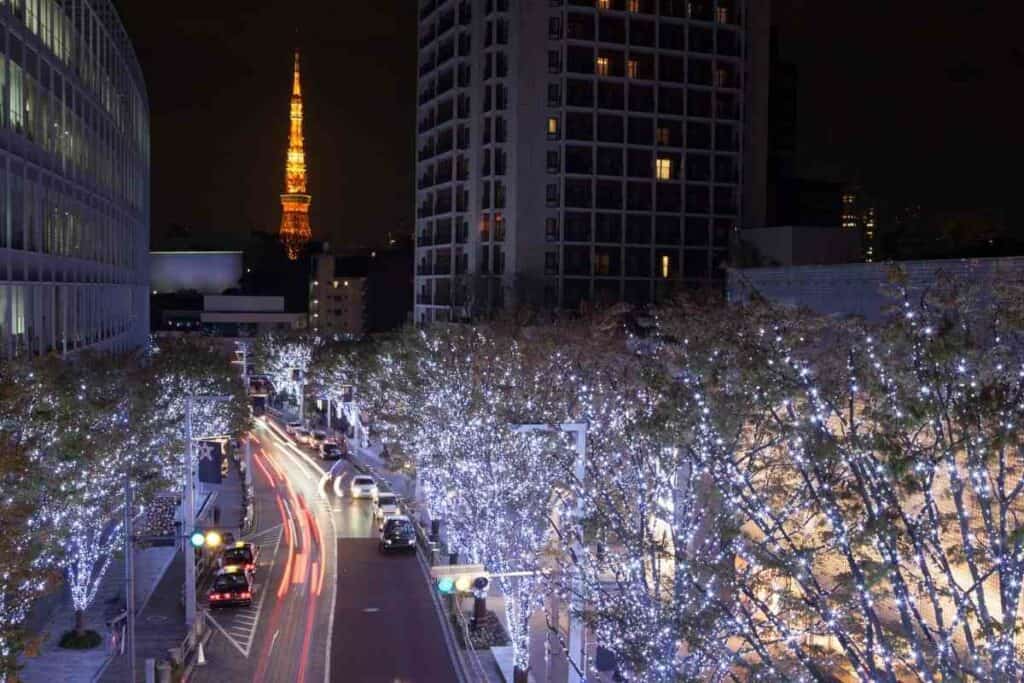
Without this pinnacle moment in History, Japan may not even celebrate Christmas at all.
Under the rule of self-titled Emperor Meiji, this political reform dismantled the feudal system that was in place, reverting back to an imperial one.
From the Late 1860s – Christianity was no longer banned, and Christmas was making a slow and steady come back.
An Iconic Christmas Tree
The seemingly inevitable return of Christmas celebrations, was supported at the turn of the 20th century, setting the tone for the future of the holiday season in Japan.
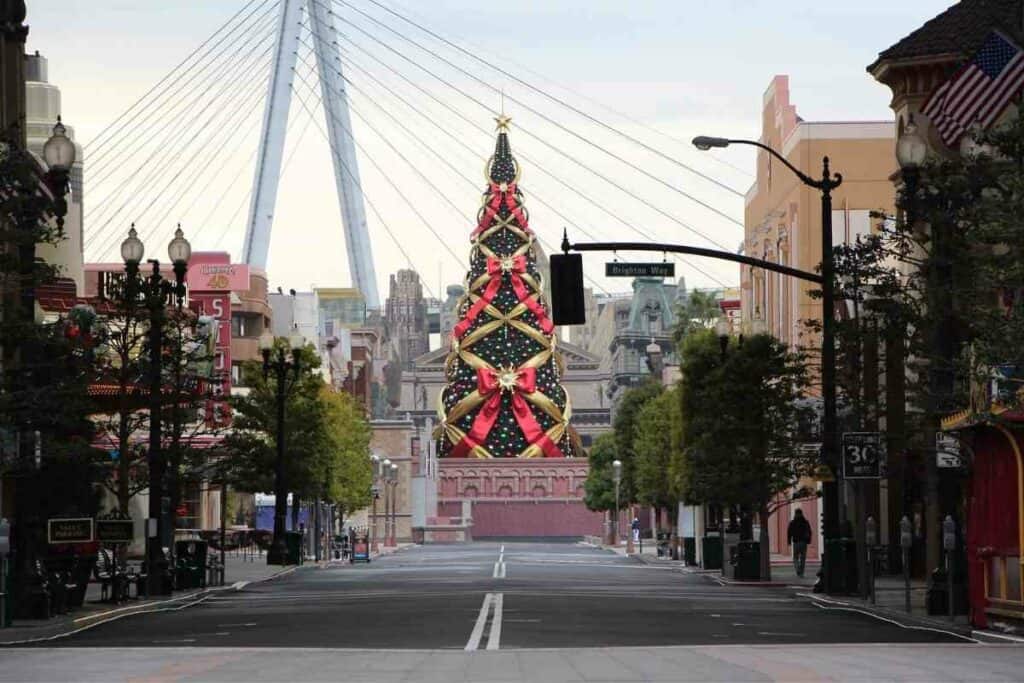
In 1900, an historic event took place which went a long way towards normalising Christmas and indeed the Christmas Tree as a symbol of the season itself.
Rejuvenating Christmas in Japanese culture, Meiji-ya, a store in Japan, erected a massive, decorated Christmas tree which inspired others so much that its effects are said to have disseminated throughout Japanese society, as a whole, reverberating through time and are still felt to this day.
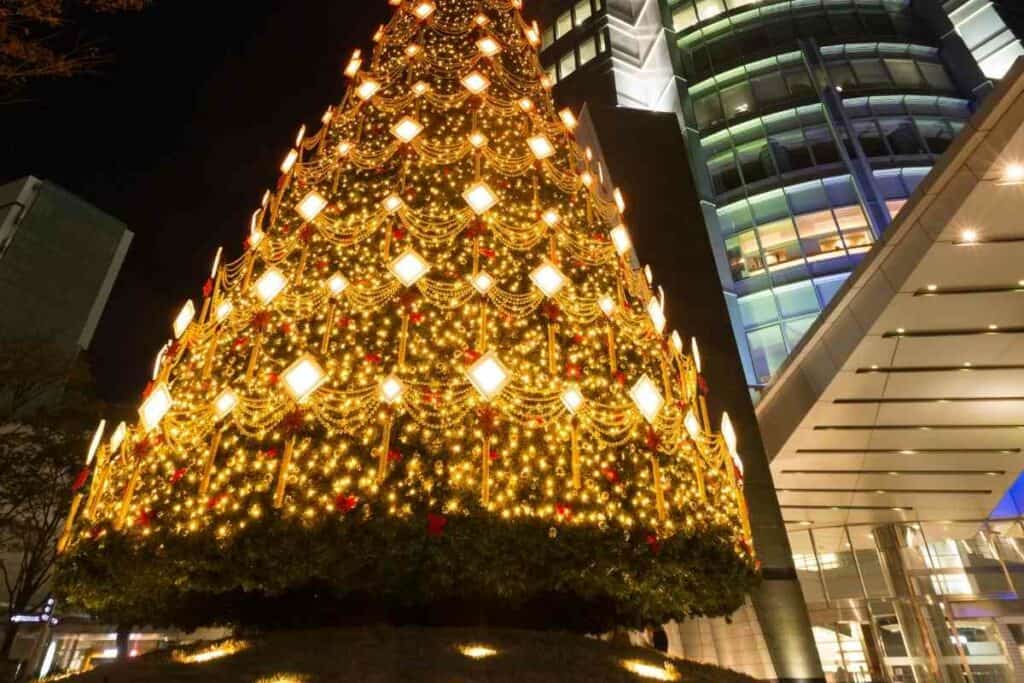
The store also introduced festively themed foods, along with the concept of Christmas sales, which were soon adopted by many of their rivals as time went by.
Before Long: Christmas was commonplace within Japanese culture and is now a ubiquitously joyous time of year. That was, of course, until World War broke out and the Japanese Christmas was essentially put on the naughty list.
Changing Perspectives of Christmas
Throughout World War Two, for obvious reasons, America became a taboo subject in Japan.
For a few short years, Christmas went under a figurative rock and was not even mentioned, let alone celebrated.
Even “America” became a dirty word, so any associations with western culture, at all, were brushed under a rug until the conflict was over.
A dark time for Christmas; a dark time for the entire world.
Japanese Christmas is Reborn
Catalysed predominantly by the American occupations of post-war Japan, in the years ensuing WW2, a Christmas boom took place across Japan, which saw the inflation of such celebrations and an all-new appreciation for many other elements of American culture, including Christmas.
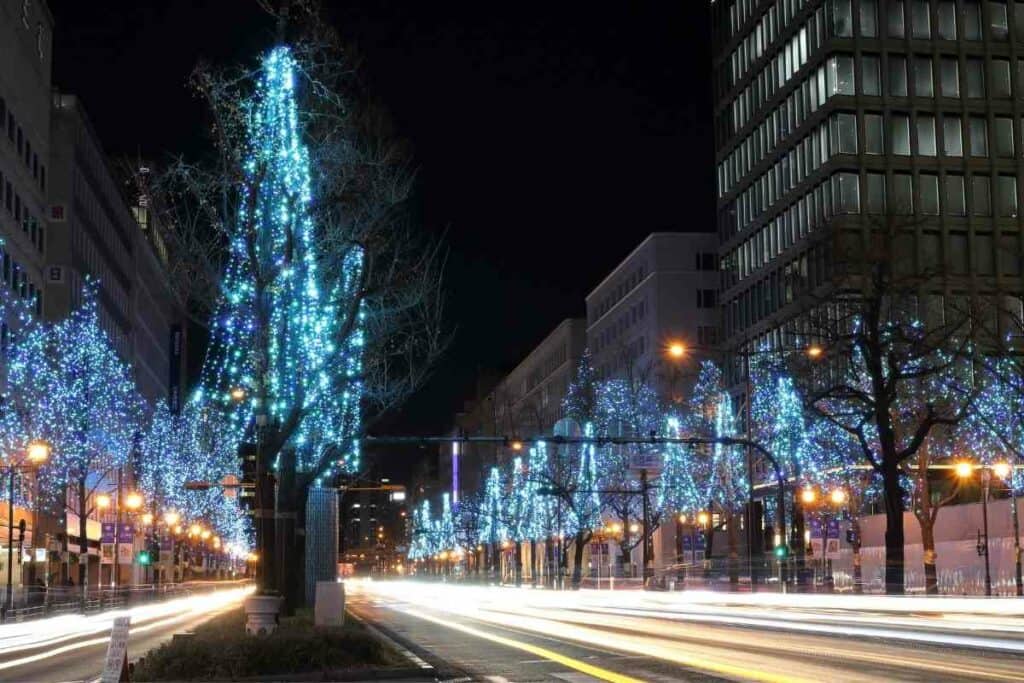
Even a Japanese Christmas cake became a centralised tradition – patriotically made with icing coloured in order to pay homage to the red and white flag – this sweet sponge cake is still made to this day, often with strawberries and cream.
It is such a staple of the local culture that people have even published academic papers about it.
A Traditional Japanese Christmas Boot
Planning to visit Japan at Christmas time?
Take your Christmas stocking and you might be able to slot it right inside your very own Japanese Christmas Boot!
Similar to the traditional Christmas stocking, with which we are familiar, the Japanese Christmas Boot has a parallel use.
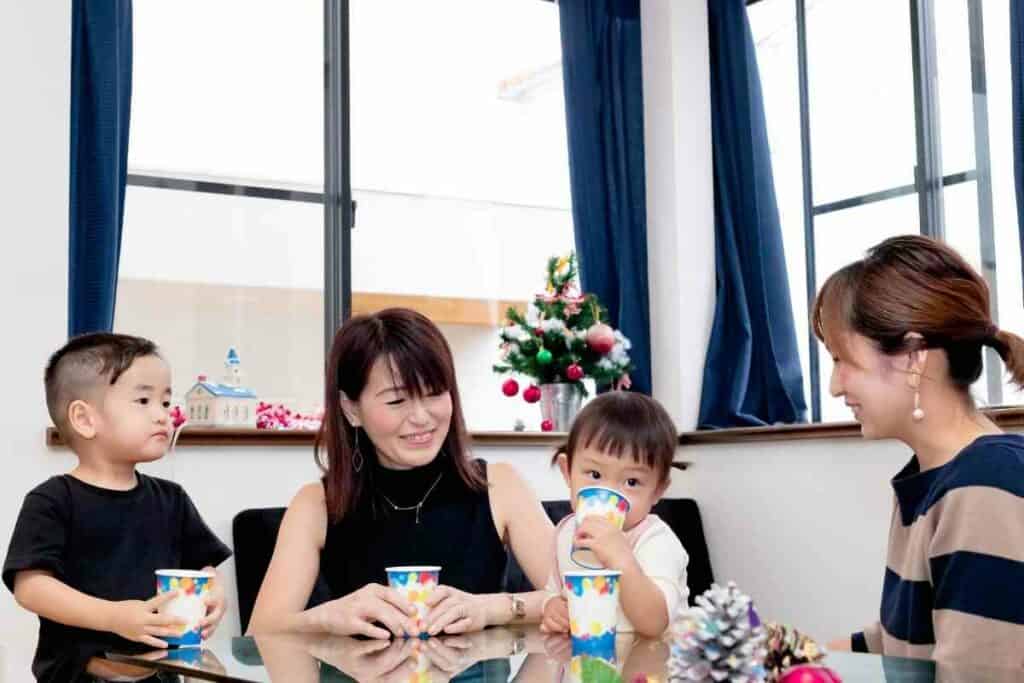
A concept which was established and popularised in the 1960s, this is now a booming commercialised business come the Fall.
Stuffed with small gifts, candy, and toys, they are often very personal, handmade gifts.
However, there is a colossal market for these, which are mass-produced and sold widely around Christmas time.
Some even sport famous anime characters and they are given widely, as gifts, to young children.
Why Do the Japanese eat KFC at Christmas?
Thanks very much to an undoubtedly unremarkable advertising slogan, 1974 saw the birth of a Japanese Christmas tradition involving the consumption of fried chicken.
Wandering the landscapes of Japan, it is rumoured that foreign visitors sought out turkey for their Christmas dinner.
As they failed to find any, they settled on some good old chicken instead.
Apparently – The marketing team at KFC got wind of this, slapped “Kentucky for Christmas!” on an ad, and voila! It’s been Kentucky Fried Chicken dinners all round, at Christmas time, ever since.
A Secular Christmas
Because Christianity is such a rarity, religion plays little-to-no part at all in a Japanese Christmas.
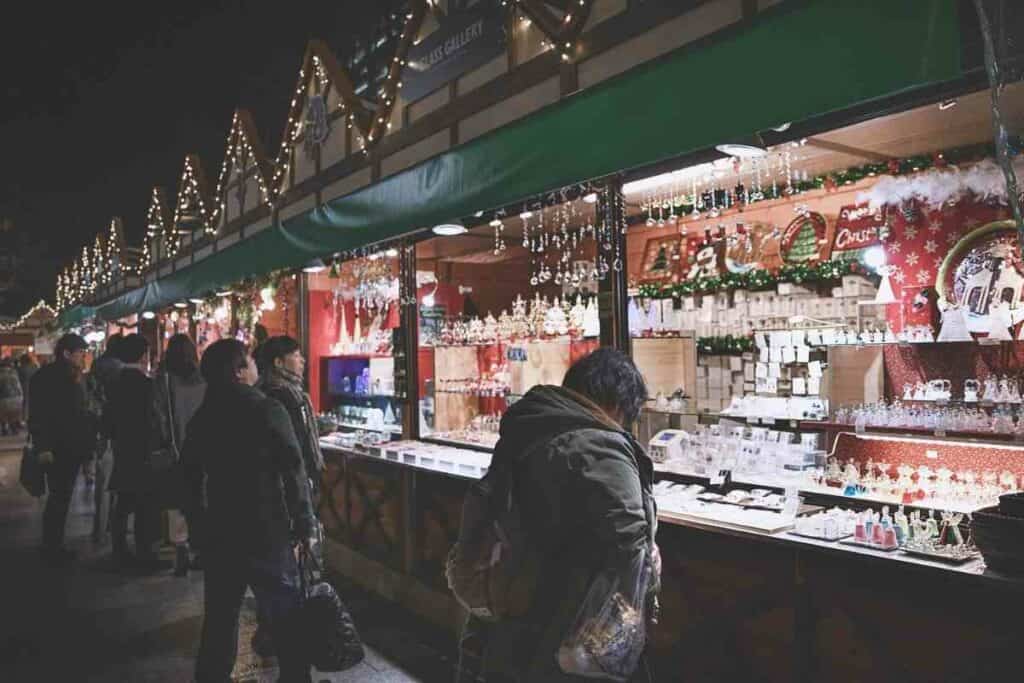
As in many states of America, and even in the UK and parts of Europe, Christmas has become largely secularised and is linked more with:
- spending money
- gift-giving
- family gatherings
- and competing with your neighbours for the best festive display of twinkling lights
So, it is not so much about Religion for the Japanese, as it is about the massive celebrations and spending time with your nearest and dearest.
Similar to Valentine’s Day: Many sources state that the season is predominantly celebrated by couples, because family celebrations and general gatherings traditionally take place over New Year. A time when more Japanese traditions take place.
Japanese Christmas Today
Growing in popularity over the last fifty years or so, Christmas is now an officially commercialised part of Japanese life.
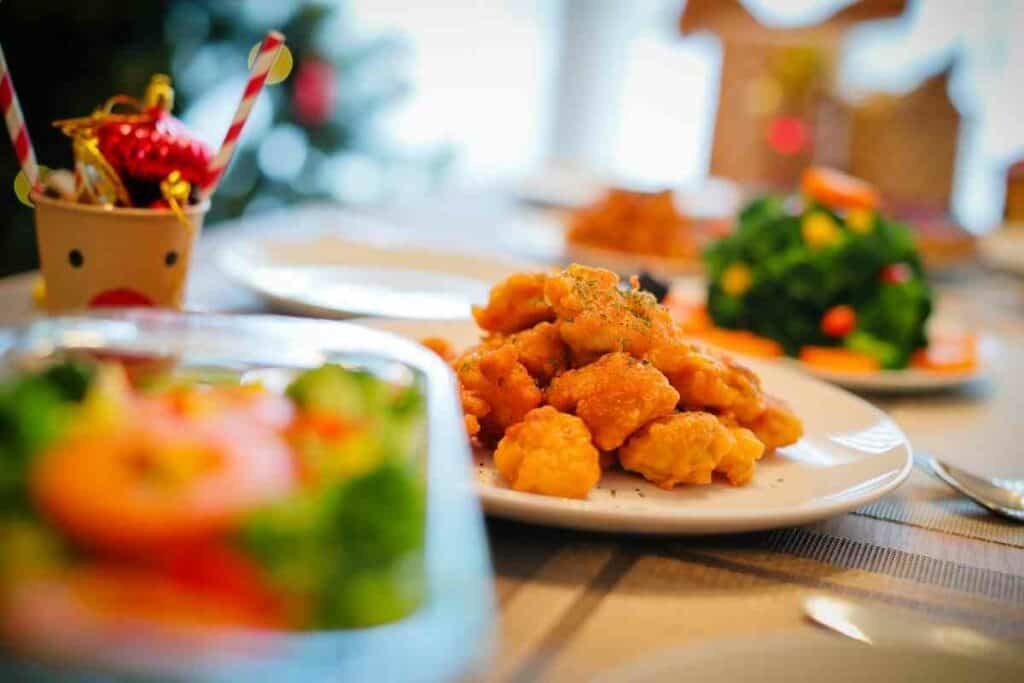
Helping businesses turn over huge profits each year, this is not only KFC’s most profitable period.
With gift-giving activity starting to rival that of western society, the Japanese Christmas is going strong.
Although it is, without a doubt, slightly different from what we are all used to in the United States, and other countries, you will still feel a strong sense of familiarity if you choose to spend your Christmas vacation in Japan.
The streets will be filled with the same lights and good old St. Nic will be a familiar sight.
Final Thoughts
The History of Christmas in Japan is an interesting story to tell.
Now something to look forward to each year, it was once a concept that was completely shunned and outlawed across the country.
Christmas’ section of the Japanese History Book has been patchy to say the least, but the tradition runs strong in contemporary Japanese culture.
Feel almost as if you are at home with a slice of fluffy Japanese Christmas cake; visit Tokyo Disneyland’s Christmas spectacular events, or go Christmas shopping in the elaborately decorated, shop-lined streets of every major Japanese city.
Visiting this incredible country is a once-in-a-lifetime experience, at the best of times, but at Christmas time, it really is something else…
You Might Also Read
- Japanese Wedding Traditions (Venue, Dress & Food)
- Kintsugi: Perfectly Imperfect Ceramic Art (with 8 Examples)
- 5 Best Japanese Makeup Brushes for a Flawless Finish
- Maiko Vs Geisha Compared: What Are the Differences?
- Japanese String Instruments (9 Famous Ones)
- Best Onsen Destinations In Japan (10 Top Locations)

